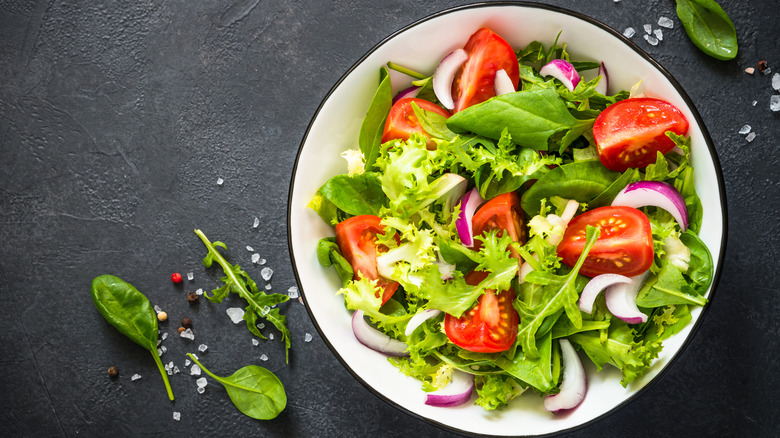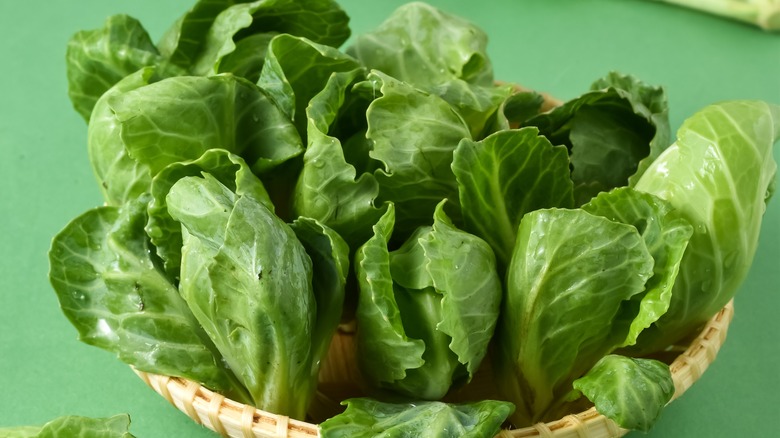What Exactly Are Spring Greens?
Let's get real here, grocery shopping is a drag. There's a reason Food Network says America is shifting away from in-store buying and further into the digital shopping experience. Between making the perfect list, commuting across town, dealing with crowded aisles, and organizing the haul itself, picking up groceries can leave you with a ringing headache. In fact, grocery shopping can be so taxing that we often forget to stop and smell the roses. In this case, of course, the roses are grocery products we tend to ignore thanks to the rushed nature of grocery shopping.
While there are dozens of goods that you might be overlooking during your weekly supermarket trip, unfamiliar produce is one of the easiest to disregard. But when you're skipping out on curious produce, you're missing out on exciting new flavors that can transform and elevate your everyday meals. So even when you're not well-versed in a certain produce, like spring greens, it's worth understanding how they can boost your culinary skills and improve your health.
But don't worry, you don't need to get the lowdown on spring greens while standing in a crowded aisle at Kroger — we have you covered.
Spring greens are baby cabbage
Not to be confused with spring mix, which is an assortment of various leafy greens used in salads and protein bowls, spring greens are a cruciferous vegetable in the same family as common greens like broccoli, brussels sprouts, cauliflower, kale, bok choy, and more (per Healthline). More specifically, spring greens are baby cabbages. BBC GoodFood says that spring greens are the very first of the year's cabbage harvest making them looser, leafier, and harvested without the hard core of fully-matured cabbage.
Spring greens, and cruciferous vegetables in general, boast a wide range of health benefits to their nutritious makeup of essential vitamins and omega-3s that help protect against cancer, promote heart health, and improve cognition. Spring greens also offer four grams of protein per serving — a hefty amount for a leafy green (per WebMD).
Like other cruciferous vegetables, spring greens are great sautéed like collards, cooked into a soup, served cold with a salad, or added to a veggie-packed sandwich or burger. GoodFood adds that while they're great served hot, they can easily overcook giving off a foul smell, so it's important to get your timing right with spring greens.
For peak enjoyment, GoodFood says spring greens are in season between April and June, so be sure to add these healthy greens to your 2023 summer grocery list.

